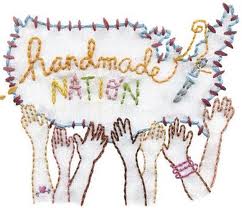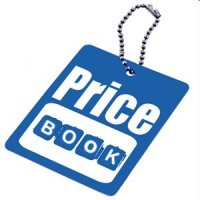 1. Buy nothing. Many times, not buying anything at all will save you more than buying something on sale.
2. Consider all your options. Instead of purchasing something could you make it, get it used, fix something you already own, or do without? Could you use a less expensive alternative or a generic or house brand item?
3. Know what you want. Write things down while you're at home, where you'll most likely be using most of your purchases.
4. Research larger purchases. You don't have to study every loaf of bread, but if you're thinking of buying an appliance, an automobile, a computer, etc., it can be well worth your time to familiarize yourself.
5. Keep a list. If it's more than two items, write them down.
Writing things down while you're at home helps you not to forget them when you're at the store, thus saving you trips, time and money. This is especially true for day-to-day purchases.
Lists of larger purchases or potential can help you to distinguish between needs and wants, and to consider larger purchases more carefully before buying them.
A list can be a good place to leave things you're still considering. You may learn more about a particular item or decide you don't need it later on.
6. Know what a good price is.
For items that you buy routinely, such as groceries, watch the advertisements and know what good prices are and what very low sale prices are. You can keep a notebook with prices at different stores if it helps.
For items you purchase less frequently, do a price comparison. Call or shop around to a few different stores. Look online, too, but don't forget to figure in the extra costs of shipping and taxes.
7. Stick to the list. Stores go out of their way to put the basic items in the back so that you have to wander past prominently placed, colorful bargains. If you didn't need junk food, colorful sandals, or an extra 100-foot extension cord when you were at home, you don't need it in the store.
8. Stock up, but be selective about what you stock up on. Bulk pricing can get you a good deal, but if you end up with 25 pounds of flour and you never bake, it's not really a good deal. Buy in bulk if you use it, if it will last long enough for you to use it, if you have the space to store it, and if the price is really better than you'd get buying a more moderate quantity.
9. Consider bargains carefully. Is it really a good deal, or is somebody trying to up sell you or persuade you to buy something you don't need?
10. Learn to recognize a sales pitch and resist it.
11. Spend cash. Seeing yourself Part Company with your money, and parting company only with money you have, can often remind you to spend less. It can certainly help you keep from overextending yourself.
12. Think through the lifetime of your purchase. Will this purchase become clutter? Will you be able to go on using it for a long time? Can you do without it for now?
13. Remember that not all purchases are objects. A restaurant meal, a gym membership, and a monthly cell phone bill are all purchases you should evaluate carefully. Scrutinize anything with a monthly bill or monthly payment with special care, since a few dollars a month can quickly turn into many dollars per year.
14. Figure in all costs when considering a purchase. Include taxes, subscriptions, shipping, upkeep, and your own time to use or set up whatever you are purchasing.
15.Ask for a better price. Not all prices are negotiable, but it doesn't cost you anything to ask. Simply asking "Is this the best price you can offer?" can often bring the price down, but depending on the situation, you may want to haggle a bit.

Feeling Crafty? You’re not alone. As a country, we have rekindled our love through the Arts and Crafts made in America. From knitted scarves to ceramic birdhouses to felted baby booties, American’s are getting more and more hands on.
According to a 2011 Craft & Hobby Association report, more than half of U.S. households take part in at least one crafting activity, whether it’s canning, sewing baby booties from scraps of felt, fashioning coffee clay mugs, to our young kids making the newest craze fun loom bracelets. Did you know American’s spend more than $29 billion a year on crafting-a figure that has remained pretty stable in spite of the wobbly economy.
People are creating personalized things rather than going out and spending money on the same items, says Keri Cunningham, the association’s director of marketing. “When life is crazy, it’s good to take time to do something that relaxes them.”
New things are being learned everyday in the crafting world. At skills fair in Seattle this year participants learned to make soap, nut milks, and solar cookers. People are recognizing the joy and satisfaction and security of being able to provide for our own needs, proclaimed a flyer for the event. It is kind of like relearning the skills our grandparents knew!
Crafting is not just good for the soul; it’s also good for the body and mind, according to researchers at the University of Florida’s Center for Arts in Medicine. So if you have a burning desire to do a craft find what you are good at and do it. You might make it your next full time job. The most important part is enjoy what you make and do every day.
Article provided by Parade and Teri Reuvers

Here are some more ways to save that you may not have thought of.
· Start a budget, stick to it: This may seem like an obvious tip on how to save, but it’s something that not a ton of people do. Just keeping track of where your money is going has a tendency to help you realize a lot of areas that you can save.
· Wash your own car: Instead of going to the car wash and spending between $15-30 every time you go, wash your own car!
· Do your own maintenance: If you’re handy with all things automotive, change your own oil to save on a trip to the service station. Maintain your own home appliances with help from the internet!
· Stop a bad habit: Are you a smoker? Quit! It’s better for your health and will save a ton of money. Drink lots of soda? Stop! Drink more water instead.
· Don’t pay for extras: Renting a car? Don’t pay for the extra insurance if your own insurance covers it. Going on a flight? Don’t pay for first class, but try to get an exit row with extra leg room instead.
· Save by reducing your taxable income: Take advantage of deductions, make deductible contributions to retirement accounts or increase amount sent to flexible spending or health savings accounts.
This list is just the beginning. Saving money can really become a way of life if you want it to be. You just have to be creative, have a reason and a goal for why you’re trying to save, and think consciously about the decisions that you’re making.
 October has always been my favorite month. It’s the time of year when the leaves start to change into beautiful shades of red and orange and the word “pumpkin” is in front of everything from candles to hot drinks. It’s also the month that parents turn into Inspector Gadget trying to purchase Halloween costumes without dipping into college savings.
Coming up with kids’ Halloween costume ideas is never easy. Throw saving money into the mix, and it gets even more difficult. As my son gets older, he’s starting to take more of an interest in dressing up, so I’ve become quite creative in finding ways to make sure his wishes match my wallet. Before you head to the store, it’s important to have a costume idea or theme in mind. This will help eliminate overspending and endless hours in aisles.
Here are some tips on how you can make your child’s Halloween dreams come true without taking a financial hit.
Thrift Stores
In recent years, I’ve noticed more thrift stores creating special displays just for Halloween decor and costumes. You may be able to find a complete costume (sometimes with the tags still on!) or find accessories to complement a costume. Make sure to go with an idea of what you will need to complete the costume or you could spend all day sifting through the racks to find a good match.
Consignment Stores
Consignment stores are a great budget-friendly option because you can bring last year’s costume and put some of that money toward this year’s. I frequently used consignment stores when my son was a toddler because he was growing so fast and I didn’t want to spend a lot of money on something he’d only wear once. Consignment stores may have special Halloween costume shopping events, coupons or swaps. Make sure you are on their mailing lists to stay in the loop for last-minute offers.
DIY
Last year was the first year I made my son’s costume — a buttery box of popcorn. All of the materials were items I had in my home. I used a large cardboard box, red and white duct tape, a packet of microwaveable popcorn, a sheet of paper and a glue gun. My project began with cutting a neck and arm holes in the box to fit my son. Using the red and white duct tape, I created vertical stripes around the box. I microwaved popcorn and hot-glued it to the top of the box. Using my computer and printer, I made a sign that said “popcorn” to glue to the front of the box. It was a big hit, and it only took me an hour to make.
There are so many tutorials online for how to make costumes using items you may already have in your home or can pick up at your local dollar store. Plus, not only are DIY costumes easy on the wallet, but they’re a greener Halloween option, too!
Costume Swap
This is a great opportunity to tap into your social network and help other families who may be scrambling for costumes. You can start with your child’s classroom, a parenting group, or their soccer team to see if anyone else has items to donate. You could host a costume swap at a local library or community center for two hours on a Saturday afternoon. Invite community members to bring gently used costumes and they’ll hopefully leave with a new one. Anything left over can be donated to a charity or thrift store.
 Save On Recurring Expenses-Part 1 One of the first places people should be looking to save money is on the big recurring expenses that we all have every month. Let’s look at a few places you can save. · Cell phone bill: JD Powers reports that the average annual wireless phone bill is $1,152, or about $96 a month. Why pay that much when you can get a great smartphone via a pre-paid wireless provider for hundreds less every year. My wife pays $35/month or $420 a year for unlimited data and 300 minutes every month. That’s a savings of $732 over the average! Find out how to do it on our post showing how to save on your cell phone bill. · Home phone: Some people will cancel their home phone service altogether in favor of either cell phone service only, resulting in savings of hundreds per year. Of course if you still need a phone you can go with internet telephone service instead, which often costs much less. We switched to a service called HYPERLINK "http://www.biblemoneymatters.com/ooma-review/"Ooma. OomaHYPERLINK "http://www.biblemoneymatters.com/how-to-set-up-the-ooma-telo-voip-device/" was easy to HYPERLINK "http://www.biblemoneymatters.com/how-to-set-up-the-ooma-telo-voip-device/"setup, and it only costs about $4.50/month in taxes in our area. That’s a big savings over the $43/month we were paying before. If you need to have a land-line for a home security system or something along those lines, consider canceling extra options on your phone like voicemail, call waiting and caller id to save on things you don’t need or use. · Internet service: Try switching your internet service to another provider in order to take advantage of new subscriber deals or promotions. Switch from one internet type to another – DSL to cable or fiber-optic internet. Switching can often get you great initial deals, and then you can hop providers to get another great deal when the promotion ends. Also consider bundling your services like phone, internet and TV to save. · TV and entertainment: there are a variety of ways to save on your TV and entertainment costs. First, you can switch cable providers from one to the other to get in on a promotional offer. If that doesn’t work you can always cut the cord altogether, and save a ton by setting up a home entertainment system using streaming services like Netflix, Hulu and other free content providers. · Utilities: Often there aren’t a ton of ways to save on your local utilities whether it is electric, garbage, gas or other services. Quite often you only have one utility option to work with. What you can do is cut back on how much you use the services to limit costs. Turn the temp up in the summer, and down in the winter to save on electric costs. Use a programmable thermostat. When you’re not using something, turn it off or unplug it. Turn the water heater down to 112 degrees and don’t run the dishwasher or laundry every time you’ve got a small load. Look for energy leaks in your home by getting a home energy audit, and find ways to maintain your home to cut costs – like cleaning your AC HYPERLINK "http://www.biblemoneymatters.com/save-money-by-doing-simple-diy-maintenance-and-repair-before-you-call-a-professional/"condensorHYPERLINK "http://www.biblemoneymatters.com/save-money-by-doing-simple-diy-maintenance-and-repair-before-you-call-a-professional/" coils or changing furnace filters regularly. · Insurance: Shop around to find the best rates on your insurance whether it’s auto, home, life or other types of insurance. The last time I switched auto insurance I was horrified to learn I was overpaying to the tune of around $1000/year, for the same coverage. That’s a lot of wasted money! Switching homeowners insurance also saved us a ton. · Gas: There are quite a few ways that you can save on gas. Do things like carpool, buy at the cheapest local gas station (use an app like GasBuddy to find it), fill up at a local warehouse club, take advantage of gas coupons via local grocery stores and use cash back credit or debtit cards that can help you save anywhere from 1-5% of gas. Of course, you can also just drive smart and limit your quick starts and stops, and keep to smooth acceleration. · Prescriptions: One of the quickest ways to save on your prescriptions is just to make sure that you buy the generic version of your regular prescriptions. Other things to do include shopping around at different pharmacies for lower costs, getting samples from your doctor or buying your prescriptions in larger quantities to save. · Property taxes: Sometimes you can appeal your property taxes if you believe the appraisal they’ve given your home is incorrect. We saved several hundred dollars by appealing our property taxes one year. · Refinance your mortgage: While lending restrictions have tightened, if you’re able you can get some amazing rates right now and save hundreds on your mortgage every month. · Remove mortgage insurance: A lot of folks are paying hundreds of dollars a year on mortgage insurance if they didn’t put down at least 20% when they bought their home. If you are one of those folks, and you’ve recently reached the magical 80/20 loan to value ratio, ask your mortgage provider if they will remove the insurance from your monthly payment. · Online bill pay: Try paying you bills online instead of mailing in a check. It can save you $50-60/year depending on how many monthly bills you have. · Gym memberships: You can save on a gym membership by taking advantage of health plan discounts, or by setting up your own home gym
The Price Book helps discipline smart shoppers by allowing a quick comparison of the average unit price of an item and comparing it to the "sale" price being offered.
At first glance, keeping a Price Book seems like a tedious chore. But by following these simple steps, the monetary return over a period of a few months may prove to be worth the effort. There are many different methods of coming up with your own personal Price Book and in time you will find what works best for you.
Getting Started
Start by saving all of your grocery store receipts. Don't forget to save the "quick-stop" receipts because often those are your "most used" items. Toss the receipts in a drawer or box so that you can begin to build your shopping history.
After you have collected four to five weeks of receipts, your next step is to begin building your Price Book using the information from the receipts.
Purchase a small three-ring notebook or binder. Get something that is not bulky and can be easily taken to the store with you without being cumbersome. You will want to be able to add and remove sheets as you build your book, so a loose leafed notebook is recommended.
Start a sheet for each major category. For beginners, stick to the main items such as, Canned Food, Boxed Food, Fresh Fruits, Vegetables, Meat, Dairy Products, and Snacks. You can always add more later as your book grows.
Create columns for listing your comparison information. You not only want to compare price but also keep track of which store offers that price. A typical sheet will include columns broken down into the following:
| Store Name | Brand/Size | Unit Price | Sale Price | Date of Sale
Referring to your old receipts, fill in the appropriate information. This will be your first step to smart comparison shopping. You will begin to see a "spending-cost history" develop as you log your information. You will also discover where to purchase your favorite items at the lowest price.
When reviewing the weekly sales advertisements, pull out your book to see how good of a deal you are really being offered. Add the best deals, on your most frequently used items, to your shopping list. If possible, buy the item in bulk, so that you can optimize your savings.
Bring your Price Book with you when you shop, to enable you to determine quickly, if an item is at a price incentive good enough for you to purchase.
Continue to save your shopping receipts and use them to update your Price Book for several weeks.
If you do this consistently for several weeks, you will soon be able to determine which stores consistently have the lowest prices on the products you purchase. Remember, no one store can offer the lowest prices on everything. Keeping an opened mind about where you shop and which brand names you shop for will quickly begin to pay off.
The goal in using the Price Book is to help discipline you to not be deceived by advertised specials and to allow you to pay the lowest price for your favorite items. Give it a try. For many people it becomes a great budgeting tool and a fun hobby.
|






 RSS Feed
RSS Feed